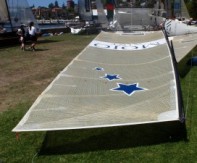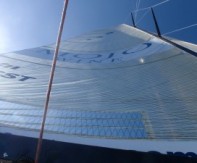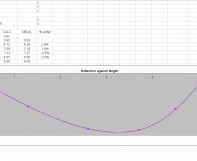RIG AND SAIL DEVELOPMENT
Take a sneak peek at the latest release of CST RIGS AND DEVELOPMENT
With new mast and spreader configurations, CST has been able to achieve a unique setup on the 18′ skiff mast that has not been seen in the class before. In aiming to utilise the natural stiffness of the sections, the conventional formula was thrown out the window, and a fresh new approach taken to achieve the desired luff rounds and performance characteristics.
We have done this by using thin-ply laminates, which allow more uni creating a stiffer mast, while still maintaining off-axis fibres in critical locations to maintain strength. This thin ply off axis fibre assists with localised load path deflection around the stress-raising points. Controlled by our unique machinery this allows the tow to be spread beyond conventional supply parameters.
With new composite design techniques constantly being applied, stay attachment points have been optimised to utilise the strength of the material and reduce the number of exposed holes in the mast with old methods like t-balling. We also know that finding the right balance of tip/mid/base panel stiffness vs span of the sail is critical to make the mast work the way the sail designer intends. As you can see, through the CST – FEA modelling, the luff round prediction is within 3% of its target bend with the desired leech load applied. We have tuned this model over the last few years and are now successfully applying it to a number of other mast applications.
So, if you combine this stiffer mast with new stiffer rectangular boom sections, and flatter sails, the loads are continually going to increase, pushing the laminates closer and closer to their design thresholds. Through full scale testing as well as scale model testing we really understand our laminates performances and characteristics.




